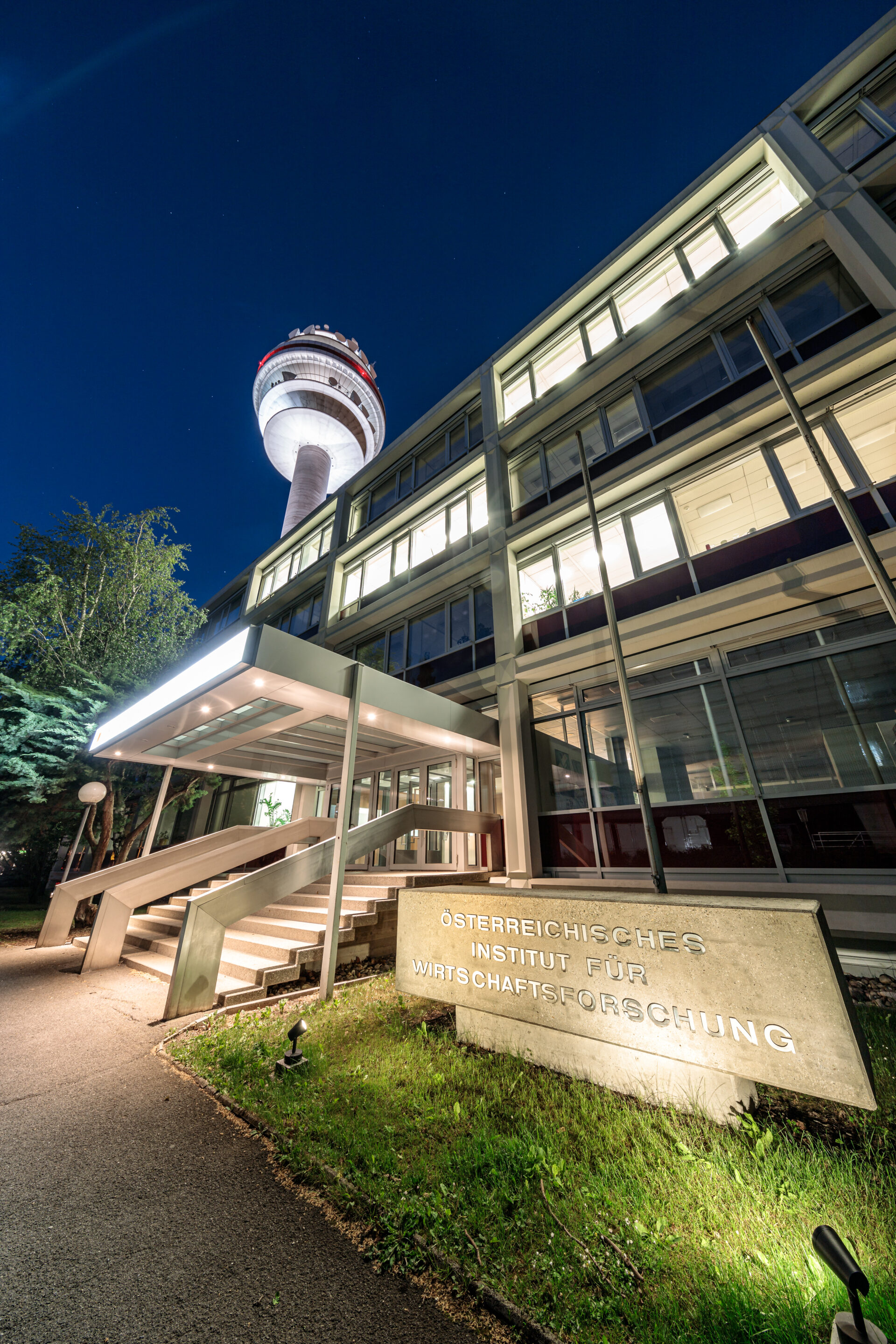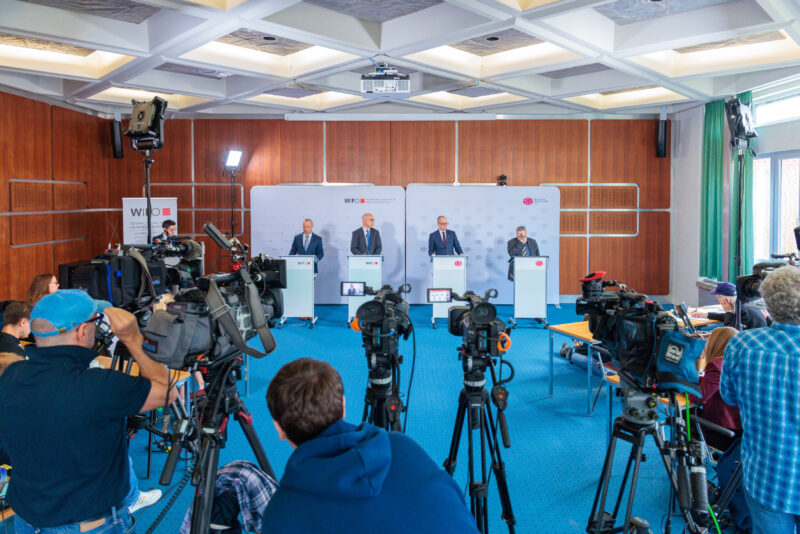
WIFO Radar of Competitiveness 2021
Austria achieves high percentile ranks in terms of per capita income, regional distribution and foreign trade. In the dimensions "social living conditions" and "use of natural resources", however, it is only in the European midfield.
The WIFO radar of competitiveness summarises selected findings on the strengths and weaknesses of Austria as a business location. On average across all 24 indicators of the radar, 66.5 percent of the European countries compared had the same or a less favourable performance than Austria in the latest available year (mostly 2020 or 2019). Austria was thus just behind the top third of countries. Three years earlier, the mean percentage rank had been even lower at 64.9, but ten years earlier it had been significantly higher at 70.1.
With a mean percentage rank of 79.6, Austria performed best in the dimension of real income, productivity and regional distribution. This is mainly due to the comparatively high gross regional product per capita in the industrial or rural non-metropolitan regions (percentage rank 96.2) and the relatively low decline in multifactor productivity during the COVID-19 crisis, which was successfully mitigated in Austria by numerous government aid measures.
On average, in the indicators on the labour market and social living conditions, Austria only belonged to the midfield of the countries compared, with a percentage rank of 56.8. This value was mainly depressed by the low employment rate in full-time equivalents and the relatively large gender gap in the employment rate. Only in two indicators of the dimension labour market and social living conditions did Austria belong to the best performing top third of the European countries: the share of young adults who are not in education, employment or training (NEET rate) and the rate of continuing education.
In the indicators on the use of natural resources, the mean percentage rank for Austria was 62.3. Austria performed relatively poorly in energy intensity and patents on environmental technologies, but relatively well – as in the previous year – in the share of renewable energy sources and the modal split in freight transport.
In foreign trade, Austria belonged to the top third of the countries compared, with an average percentage rank of 68.4. In terms of the current account balance, Austria was able to improve by one rank despite the declining foreign trade surplus. In terms of market share in tourism exports, Austria's position remained stable with a percentage rank of 83.9. The market share in global goods exports, on the other hand, deteriorated relative to the reference countries (percentage rank 64.5). The analysis of price competitiveness based on the development of the real effective exchange rate index shows a constant position for Austria in the long-term. However, an appreciation began in the middle of 2019 and has not yet fully receded.
Publications
Please contact
























